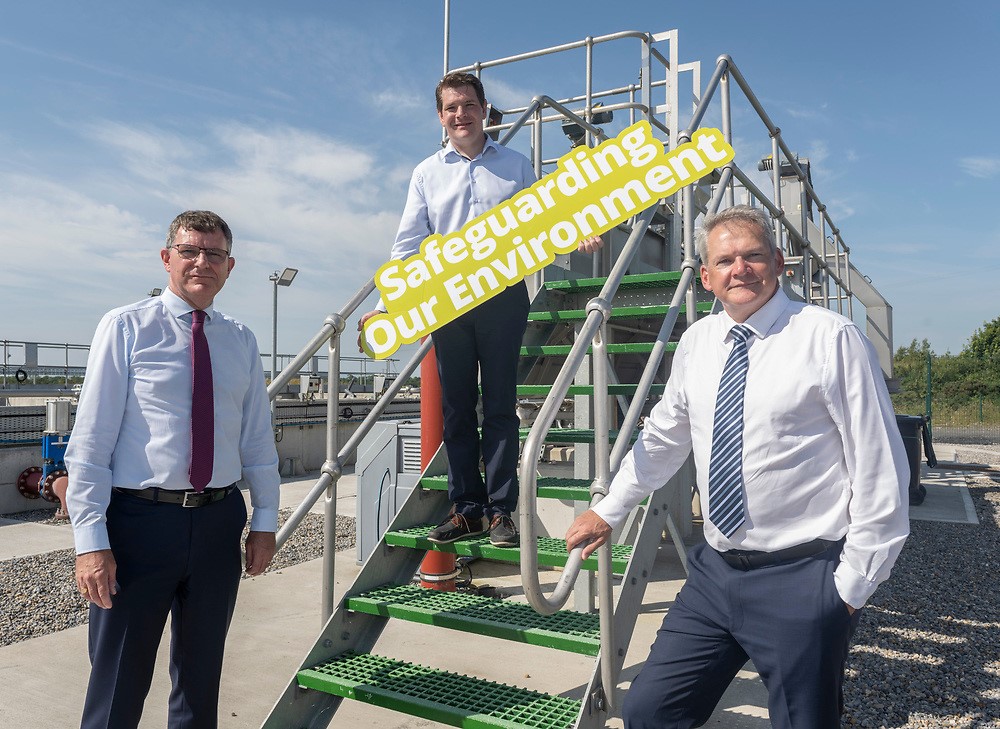New wastewater infrastructure in Mayo officially opened
New Treatment Plants for Killala, Foxford and Charlestown has ended the discharge of raw sewage
Uisce Éireann and Mayo County Council today marked the official opening of Killala, Foxford and Charlestown Wastewater Treatment Plants following a €19m investment which has ended the discharge of raw sewage to the environment in Co Mayo.
At a special event this morning to mark the occasion, Minister Peter Burke welcomed the significant investment by Uisce Éireann which included the construction of a new wastewater treatment plant in Killala.
Speaking at the official opening Minister Burke said: "I am honoured to be here today in Killala to officially open the new and upgraded wastewater treatment plants in Killala, Foxford and Charlestown. Uisce Éireann is to be commended for completing this work as part of its commitment to the people of Mayo. The provision of a reliable wastewater service, in a manner that protects the natural environment, is essential to the economic and social development across the county."
The new and upgraded treatment plants will bring huge benefits to the local communities in terms of protection of the environment; improved water quality for angling, water sports and marine life.
Cathaoirleach of Ballina Municipal District, Cllr Annie May Reape said: "I'm delighted to be here to witness the successful completion and official opening of Killala, Foxford and Charlestown Wastewater Treatment Plants. The completion of these essential projects is vital to ensure we can provide a platform for future growth in these communities. They will also make a huge difference to Killala Bay and our natural environment."
The newly constructed wastewater treatment plant in Killala is now able to serve a population equivalent (PE) of 1,800 providing a platform for future social and economic growth.
In Foxford, a new treatment plant was built to serve a population equivalent of 3,500, this also included the construction of a new pumping station and upgrade of the three existing pumping stations; installation of a new rising main and upgrade of the collection network.
The existing wastewater treatment plant in Charlestown was also upgraded to increase the capacity to 3,400 (PE) as well as the installation of new sewers and a new outfall to the Mullaghanoe River.
Niall Gleeson, Uisce Éireann's Managing Director added: "The size and scale of the challenge of raw sewage discharging into our water ways is well documented. Since 2014, Uisce Éireann has built new wastewater infrastructure for 16 towns and villages across the country, ending the discharge of raw sewage into our rivers, lakes and seas; the equivalent of 100,000 people's worth, every day. Half of the raw sewage entering waterways in Ireland has now been eliminated and we are on track to fully removing the majority of raw sewage discharges by 2025.
"The new sewerage schemes that we are celebrating today will ensure that wastewater is adequately treated and meets appropriate standards before being safely discharged into the environment."
In 2018 Uisce Éireann completed a €9 million wastewater treatment plant and sewerage infrastructure project in Belmullet with a capacity to treat wastewater from a population of up to 2,500 people which ended the discharge of untreated sewage at that location.
Uisce Éireann is also progressing plans for a new wastewater treatment plant in Newport to address the last remaining raw sewage being discharged in the county.
Significant capital investment is needed over a sustained period of several decades to address the poor condition of Ireland's water and wastewater infrastructure. Works have been prioritised to address the most critical issues in line with commitments outlined in the Government's Water Services Policy Statement and Uisce Éireann's Strategic Funding Plan. Uisce Éireann has invested €3.8 billion in water and wastewater infrastructure to the end of 2019 and plans to invest a further €5.2 billion under its Capital Investment Programme from 2020 to 2024 in drinking water and wastewater quality and capacity and new infrastructure.
